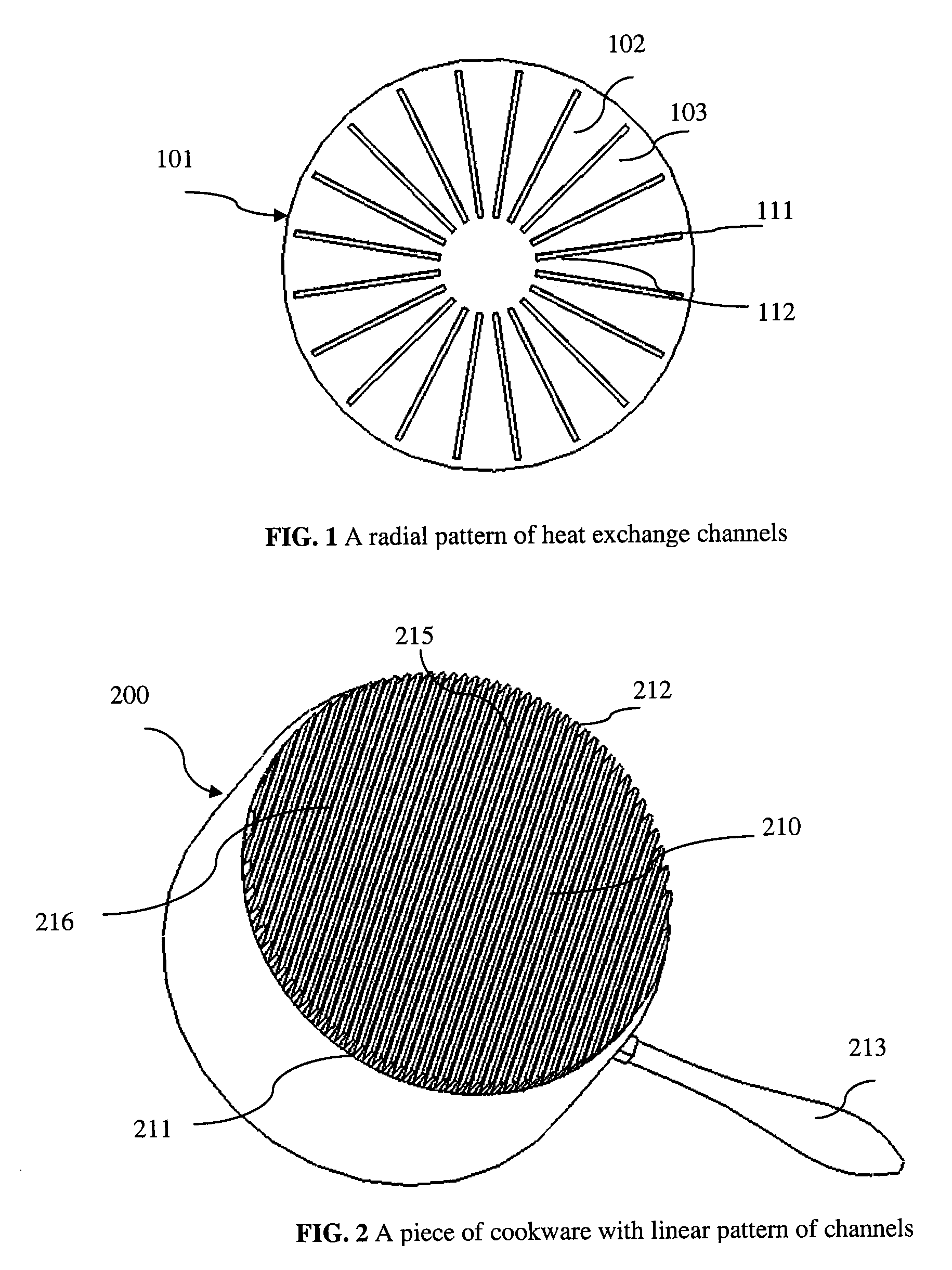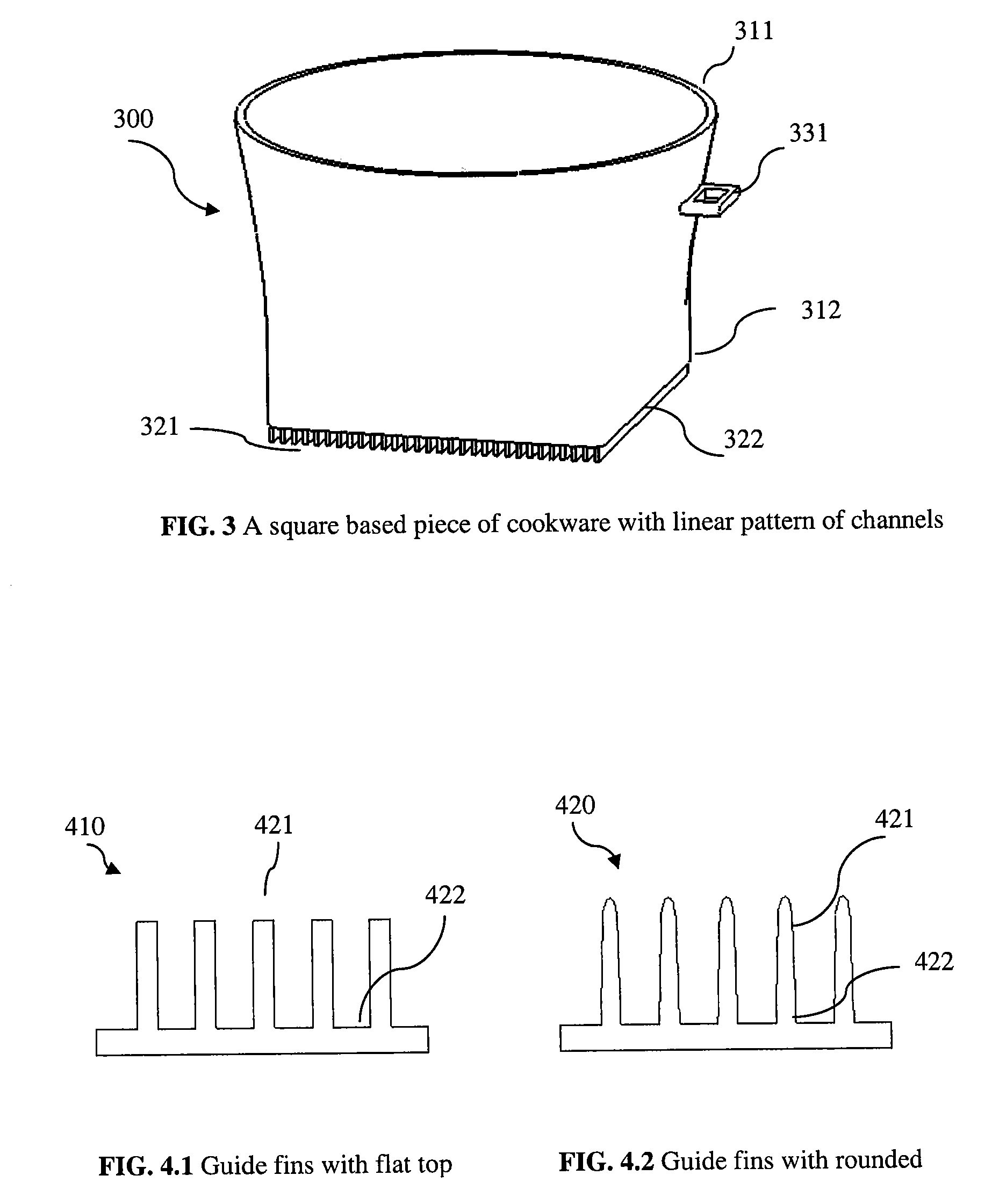Energy efficient range
- Summary
- Abstract
- Description
- Claims
- Application Information
AI Technical Summary
Benefits of technology
Problems solved by technology
Method used
Image
Examples
Embodiment Construction
[0029]Although the following detailed description contains many specifics for the purpose of illustration, anyone of ordinary skill in the art will readily appreciate that many variations and alterations to the following exemplary details may be made.
[0030]In a typical process, a piece of cookware holding a medium such as water is placed on top of a flame from a burner. The flame rises up due to pressure of the gas in the supply piping and the buoyancy of the hot air causes the flame to touch the base of the cookware. Heat is transferred from the flame to the base via convection transfer as well as radiation transfer. The heat is absorbed from the heat-receiving surface and is transferred to the food surface by thermal conduction. Heat is then transferred from the food surface to the water via conduction and convection. In this whole process, the heat transfer from the flame to the cookware body via convection transfer is the most inefficient step limited by the thick boundary layer...
PUM
| Property | Measurement | Unit |
|---|---|---|
| Mechanical strength | aaaaa | aaaaa |
| Pressure | aaaaa | aaaaa |
| Area | aaaaa | aaaaa |
Abstract
Description
Claims
Application Information
 Login to View More
Login to View More - R&D
- Intellectual Property
- Life Sciences
- Materials
- Tech Scout
- Unparalleled Data Quality
- Higher Quality Content
- 60% Fewer Hallucinations
Browse by: Latest US Patents, China's latest patents, Technical Efficacy Thesaurus, Application Domain, Technology Topic, Popular Technical Reports.
© 2025 PatSnap. All rights reserved.Legal|Privacy policy|Modern Slavery Act Transparency Statement|Sitemap|About US| Contact US: help@patsnap.com



